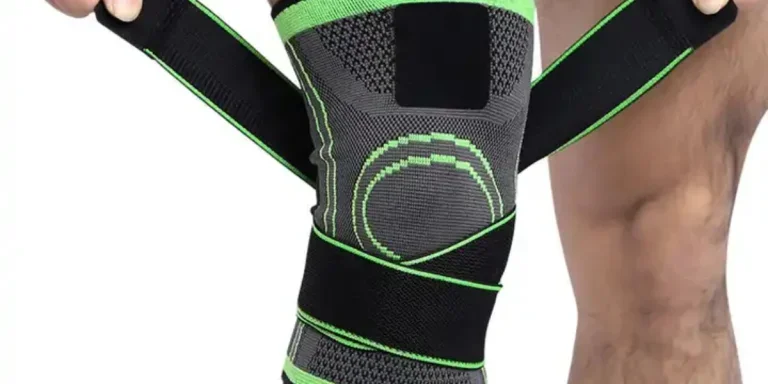A knee brace is a specialized garment designed to offer structural help to the knee joint, presenting balance and protection. These helpful devices prove instrumental in helping people with a spectrum of conditions, ranging from slight strains to chronic arthritis. They are commonly employed to alleviate pain, enhance stability during physical activities, and prevent any further harm.
This guide gives an overview of the market for knee braces, and the different types available today. It also highlights how to source the best knee braces in 2024.
Table of Contents
Market share of knee braces
Types of knee braces
Factors to consider when sourcing knee braces
Final thoughts
Market share of knee braces
According to Precision Business Insights, the knee braces market has witnessed a good good-sized boom. The market had a valuation of USD 1.86 billion in 2022 and has a projected compound annual growth rate (CAGR) of 4.35% from 2023 to 2029. It is set to attain a value of USD 2.62 billion by the end of 2029.
A surge in sports activities and health activities has heightened the risk of knee accidents, prompting individuals to seek preventive measures proactively. An aging population, coupled with a growing awareness of knee fitness, fuels the demand for knee braces to deal with arthritis and other degenerative situations.
The North American knee braces market has established a dominant position, anticipating a growth of 4.2% between 2023 and 2032. This substantial market share can be attributed to several factors, including the presence of key industry players, a rising incidence of orthopedic and knee disorders, and the expanding elderly population.
According to a 2021 report by the National Safety Council, approximately 3.2 million individuals in the United States sought treatment in emergency departments for injuries related to sports and recreational equipment.
Types of knee braces
1. Prophylactic knee braces
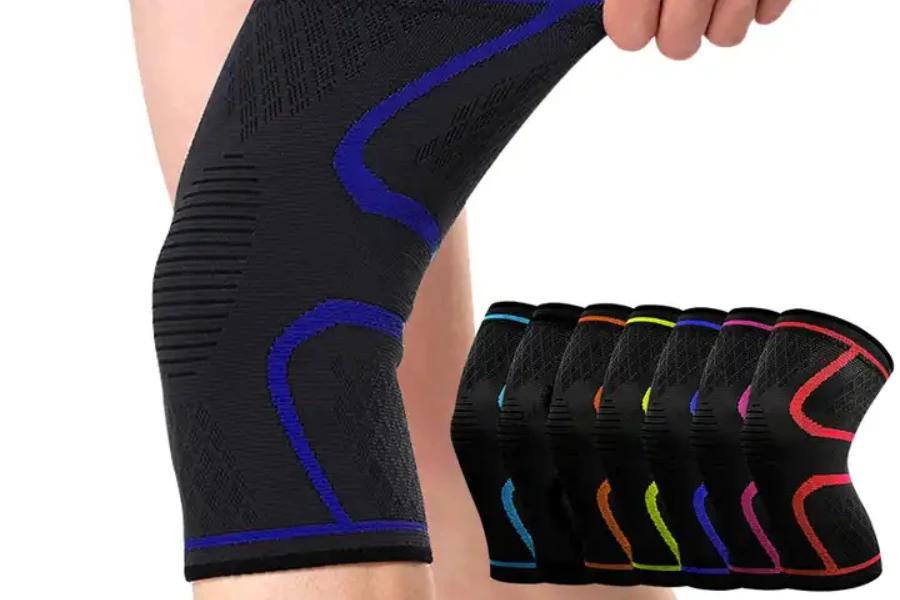
Prophylactic knee braces are preventive and designed to defend the knee from potential injuries, specifically during high-impact sports. Commonly worn by athletes carrying out activities that contain sudden route adjustments or pivoting, these braces provide stability to the knee joint.
They are constructed with strong materials and frequently have a hinged design, making sure the users get the desired help with a reasonable motion range. Prophylactic knee braces are favored by athletes, together with soccer players and skiers, who want to reduce the risk of ligament injuries like anterior cruciate ligament (ACL) sprains.
2. Functional knee braces
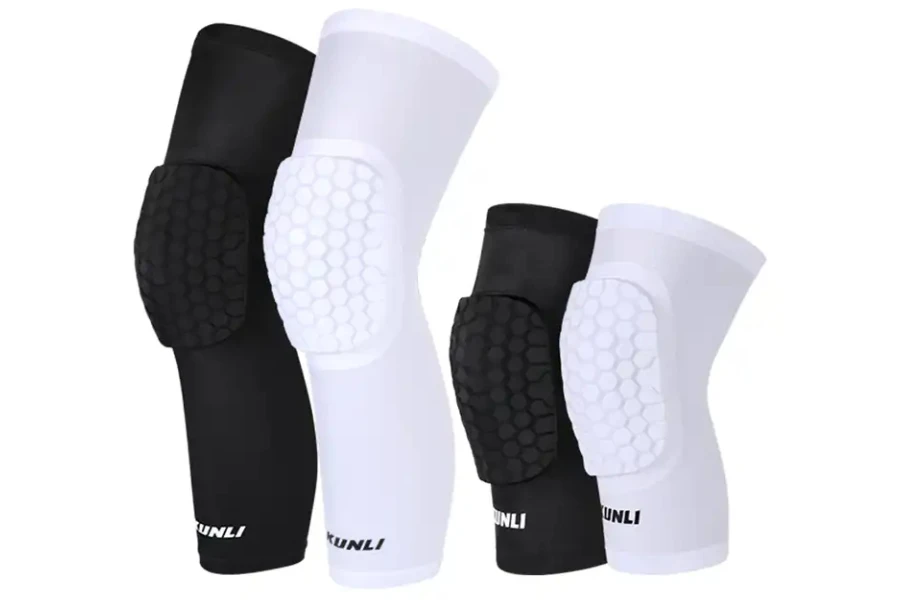
Functional knee braces are used by individuals improving from precise injuries, like ligamentous tears or strains. These braces are characterized by their adjustable hinges and sturdy frame. Athletes returning to sports after an injury frequently use functional knee braces to shield and stabilize the injured knee.
These braces are instrumental in controlling joint movement and mitigating the danger of re-damage. They also have a slight range of movement, making them suitable for activities that require agility and flexibility.
3. Rehabilitative knee braces
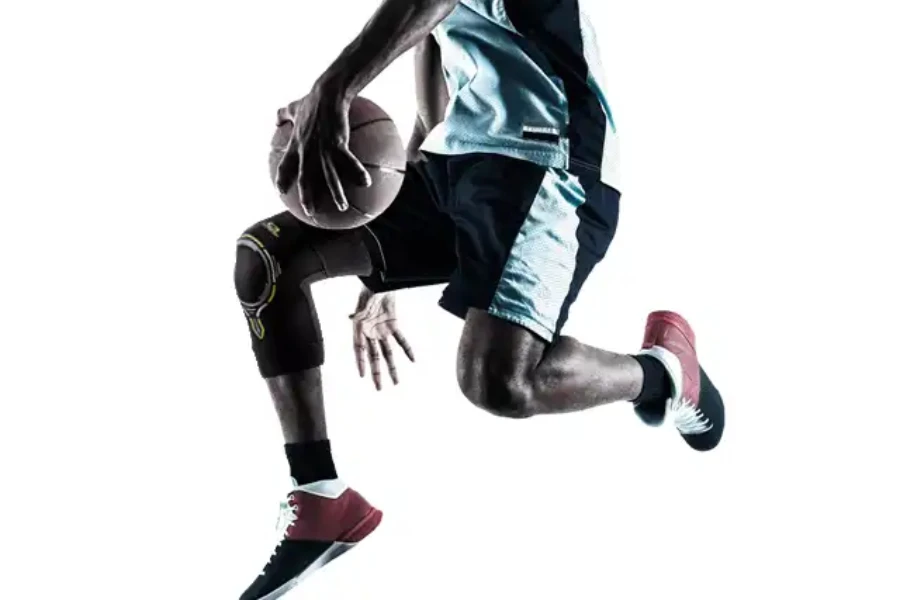
Rehabilitative knee braces are tailor-made for individuals inside the post-injury healing phase such as after surgical processes. The braces feature adjustable settings, allowing for managed movement and assisting in slow rehabilitation.
They are typically utilized by patients getting better from knee surgeries, together with anterior cruciate ligament (ACL) reconstruction. Rehabilitative knee braces offer support during the healing process, enabling patients to regain energy and flexibility regularly.
4. Unloader/offloader knee braces
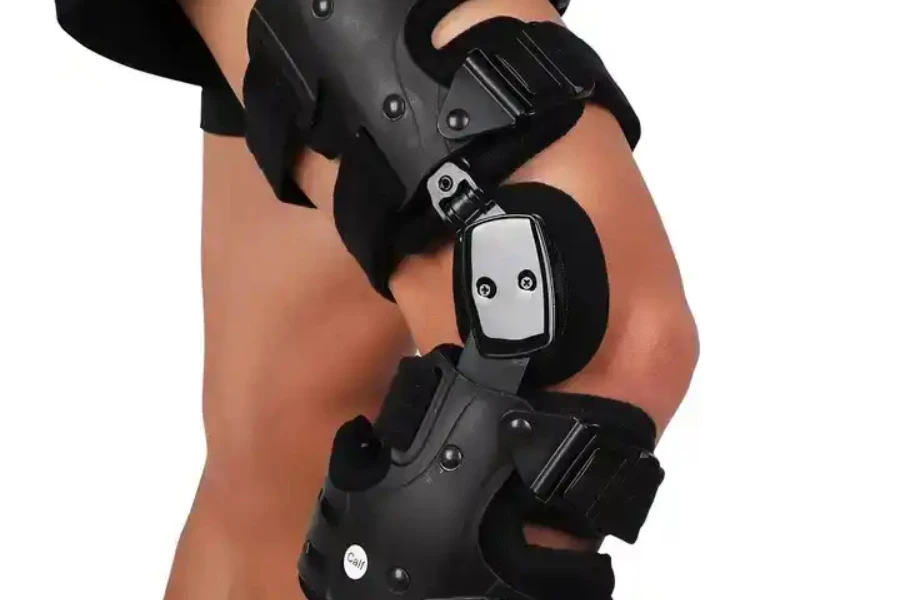
These knee braces are designed to relieve stress on particular compartments of the knee. The unloader or offloader knee braces are frequently prescribed for individuals with osteoarthritis or meniscus injuries. These braces redistribute the burden far from the affected area, decreasing pain and selling higher joint function.
Ideal for people with conditions like medial or lateral compartment osteoarthritis, unloader knee braces provide focused support and permit a number of movements conducive to everyday activities.
5. Neoprene knee sleeves
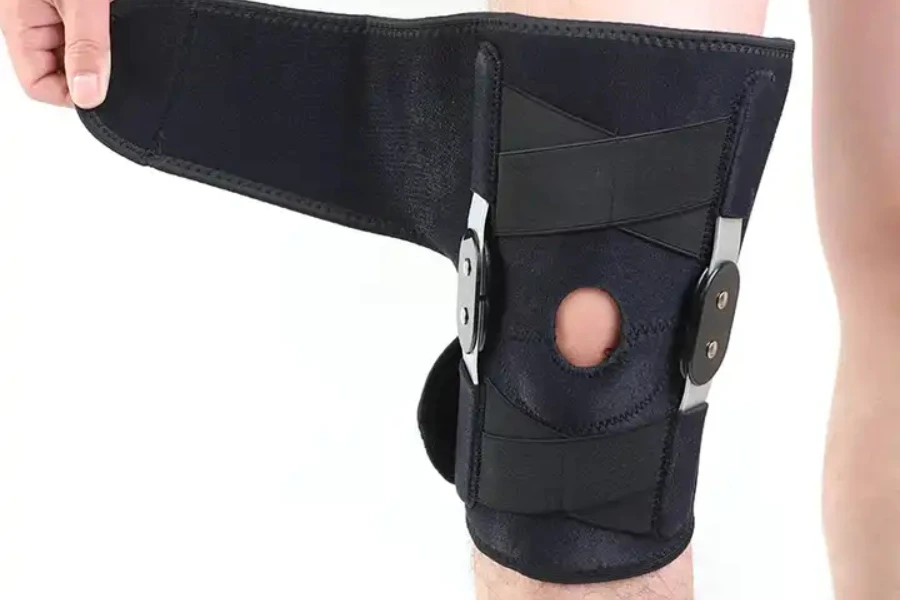
Neoprene knee braces are flexible and extensively used for general knee support and warmth. They are constructed from a stretchy, artificial rubber material. Neoprene braces provide compression, improving blood movement and promoting joint stability. They are used by athletes conducting various sports activities.
While they don’t feature hinges, neoprene knee sleeves are valued for their flexibility and comfort, making them a famous choice for sports like weightlifting, going for walks, and popular fitness exercises.
Factors to consider when sourcing knee braces
1. Price
Knee braces vary widely in cost, and as a buyer, you need to strike a balance between financial constraints and the favored features for effective knee help.
- Neoprene sleeves typically fall within the price range of USD 20 to USD 50, making them a budget-friendly option. They are suitable for individuals looking for basic knee support without breaking the bank.
- Functional braces come at a higher price point, ranging from USD 50 to USD 200. These braces are ideal for those requiring more advanced support, often recommended for individuals recovering from injuries or engaging in sports activities.
- For individuals with specific medical conditions or severe knee issues, specialized knee braces such as unloader/offloader braces are available, typically costing USD 300 or more.
2. Injury type
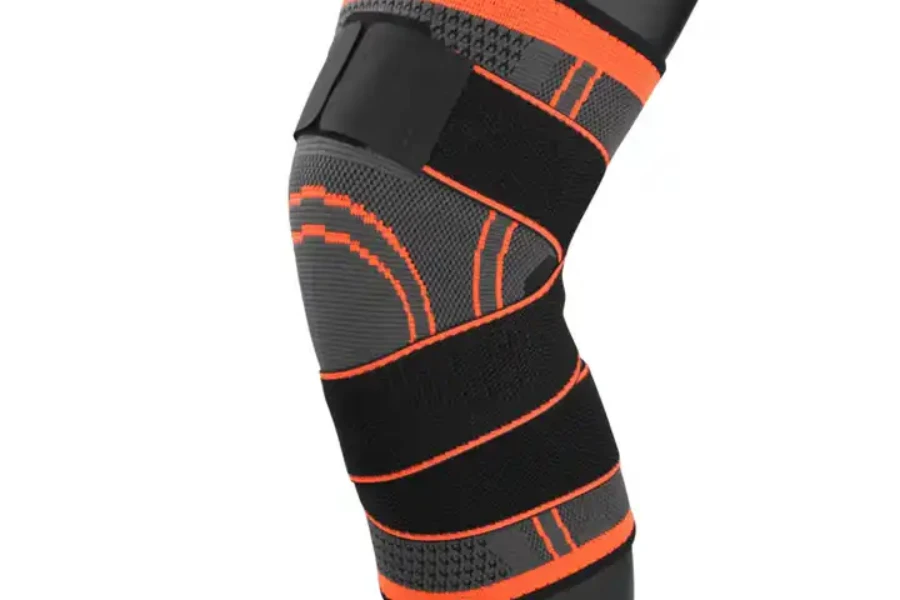
Tailoring the choice of knee brace to the precise injury kind is of importance. Different knee injuries require different levels of support, stabilization, and compression.
- General support and prevention – For general knee pain and preventative support during sports activities, neoprene knee sleeves and prophylactic braces are the best options.
- Ligament injuries – Involves damage to the ligaments in the knee, such as the ACL, MCL, PCL, or LCL, commonly caused by sudden twists, impacts, or hyperextension. The functional braces and the hinged braces are perfect for these injuries as they provide support to injured ligaments during movement.
- Meniscus tears – Refers to tears in the meniscus, often occurring due to twisting, pivoting, or forceful impacts. Knee sleeves and wraparound braces are preferred for these types of injuries because they provide compression and mild support.
- Arthritis – This represents inflammation of the knee joint, with osteoarthritis involving the degeneration of cartilage and rheumatoid arthritis. The unloader braces are best for arthritis as they shift weight away from the affected joint, reducing pressure for arthritis patients.
3. Material
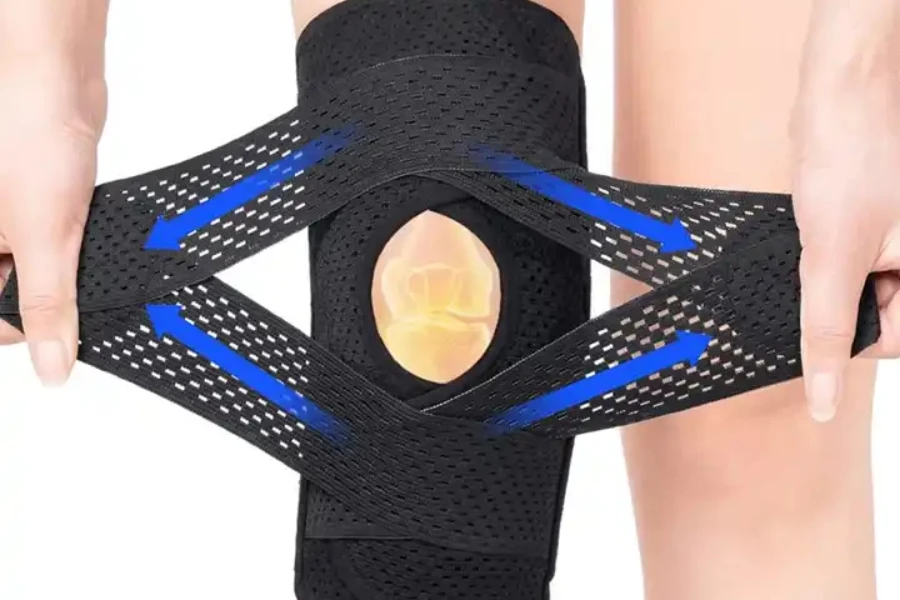
The material composition of a knee brace significantly impacts its overall performance and comfort. Some of the most common materials include:
- Neoprene – This is an artificial rubber that is generally used for its elasticity and thermal insulation in knee braces. It is used to manufacture neoprene knee braces.
- Lightweight materials – These are materials like aluminum that are lightweight and provide liquidity. Braces made from these materials are functional knee braces.
- Carbon fiber – This material is known for stability and support. You will find functional knee braces that are made of carbon fiber for added strength.
- Tender padding and durable plastics – These materials are known to add comfort to braces. They are mostly used on unloader/offloader braces.
4. Size and fit
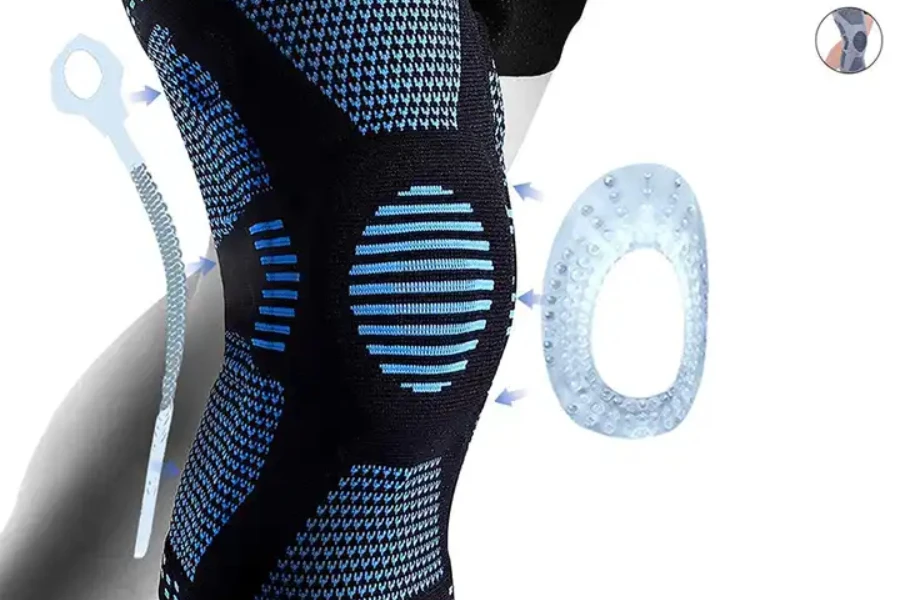
Sizing charts of knee braces provided by manufacturers need to be consulted meticulously, taking into account measurements around the thigh, knee, and calf. The sizes of knee braces depend on body type.
Some of the body types include:
- Slim/lean build – Individuals with a slim or lean build typically have a smaller knee circumference. Knee braces in the small size start from 12 to 14 inches.
- Average build – Those with an average build generally fall within the medium size range of 14 to 16 inches.
- Athletic build – Individuals with an athletic or muscular build often have larger knee circumferences and knee braces in the large size range from 16 to 18 inches.
- Plus size – Those with a plus-size or full figure typically have larger knee circumferences ranging from 18 to 20 inches.
5. Durability
The durability of a knee brace varies depending on the type, material, and frequency of use.
- Neoprene knee sleeves last 6 months to 1 year with normal use.
- Practical braces, owing to their strengthened production, normally last 1 to 3 years.
- High-end braces, in particular the ones designed for post-surgical procedure rehabilitation, can provide an extended lifespan of 3 to 5 years.
6. Range of motion
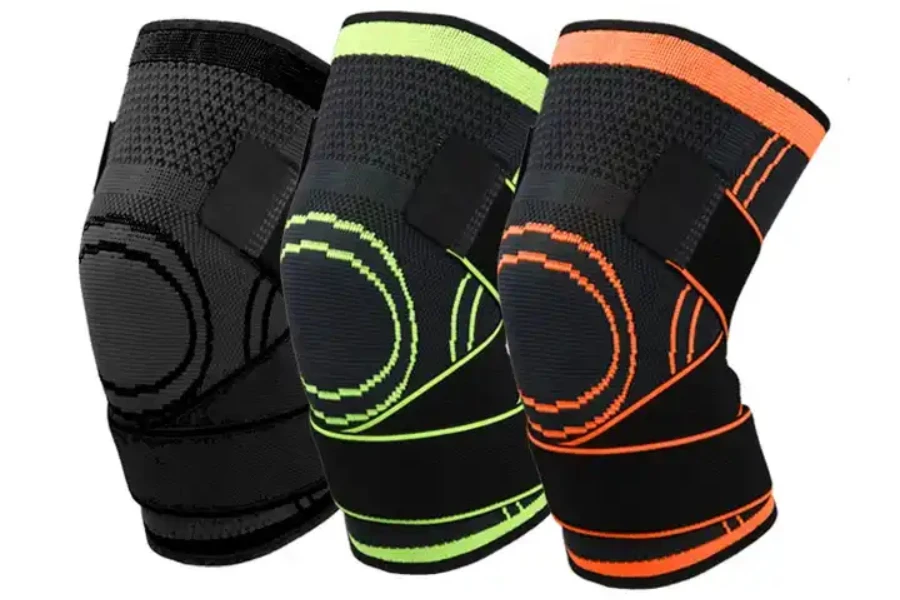
The range of motion directly influences the brace’s effectiveness in supporting and stabilizing the knee joint. It refers to the extent to which the knee can move comfortably and naturally while wearing the brace.
- Prophylactic knee braces, crafted from rigid materials, offer essential support and stability, often limiting the range of motion. These braces are commonly used in high-impact sports like football or skiing, where there’s an elevated risk of collision or abrupt directional changes.
- Functional knee braces strike a balance between support and flexibility, permitting a controlled range of motion. They are crucial for athletes recovering from knee injuries engaged in activities like running, basketball, or weightlifting.
- Rehabilitative knee braces feature an adjustable range of motion settings. This facilitates gradual knee healing and controlled movement during physical therapy exercises, ensuring optimal rehabilitation.
- Unloader/Offloader knee braces strategically redistribute weight to alleviate pressure on specific areas, providing relief and reducing pain, making them suitable for conditions like osteoarthritis. They offer targeted support while allowing controlled movement in daily activities and low-impact exercises.
- Neoprene knee sleeves, offering compression and warmth, support a full range of motion, making them versatile for various sports and activities like weightlifting, running, and general fitness, aiding in reducing swelling and promoting blood circulation during movement.
Final thoughts
In 2024, deciding on the right knee brace includes thinking about elements including rate, damage kind, fabric, size and fit, sturdiness, and range of motion. Prices range from USD 20 to USD 300, depending on the type and features. Material matters, with alternatives like neoprene, lightweight metals, and sturdy plastics offering numerous benefits. Also it is important to pay attention to the range of motion of the braces, which generally permit movement between 0 and 120 degrees. To learn more, and to explore a range of knee braces, visit Alibaba.com.
